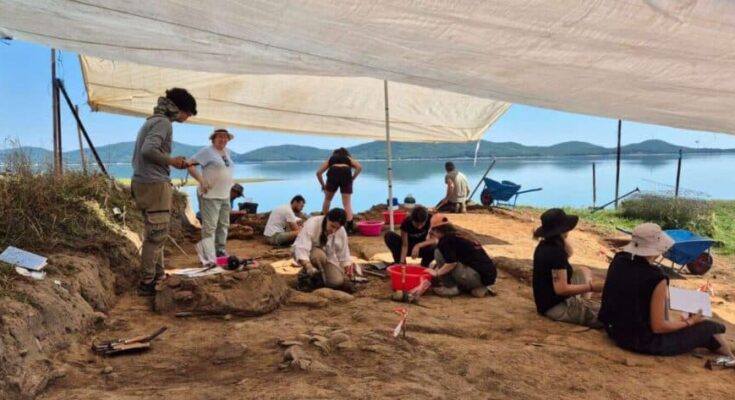
The Ministry of Culture has announced the discovery of rare findings at the Neolithic site “Botanical Garden” on the western shores of Lake Plastira. This is an excavation of the EFA Karditsa under the direction of archeologists Dr. Kyparissi-Apostolika and Dr. Oresti Apostolika.
Significant discovery at Lake Plastira
The Ministry of Culture described this site as a rare, high-altitude Neolithic settlement, distinct from known lowland counterparts due to its originality and unique artifacts.
The ministry maintained that it should be treated as a special case that opens new avenues for Neolithic research. Archaeologists revealed these findings during the recently completed third excavation period.
The Neolithic settlement identified by the Ministry at this location is at an altitude of 800 meters (just over 2,600 feet). Archaeologists uncovered the main part of the area about one meter (about three feet) below ground.
Details of the excavation
Radiocarbon dating indicates that the settlement dates back to the transition from the late Archaic to the early Middle Neolithic (5999-5845 BC-OxA 18194). The Neolithic findings in Lake Plastira confirm the site’s autonomy in raw materials.
These raw materials include clay for making vessels and various types of flint. The team also discovered an abundance of grinding tools and many millstones made of sandstone from the site’s natural environment.
Moreover, the pottery is generally monochromatic and was made in situ, as indicated by the discovery of two ceramic kiln complexes where spherical vessels are embedded in their firing positions. Based on the stratigraphy, researchers expect that more kilns will be found later. The presence of ceramic kilns from such an early period matches recent findings from three other sites in Thessaly.

Findings and implications of the excavation
The discovery of these ceramic kilns here underscores the autonomy of this mountainous location and suggests it may indicate a more permanent settlement. Excavations also revealed “proprietary constructions” for various uses, possibly an oven.
Meanwhile, a large area is covered by reddened embankments, bordered by a brick wall, where archaeologists uncovered hearths, stake holes, and other movable artifacts, the same announcement by the Ministry of Culture reveals.
Among the movable finds from the area, archaeologists distinguished various anthropomorphic figurines. These include one with the rare surviving height of 10.5 cm, with estimates suggesting that the full figure originally stood 16 to 17 cm tall.

An intact model of a furnace or house, considered a very rare find, also stands out. Some pottery has decorative elements (knobs) that may suggest closer connections with specific sites of the same period in the Thessalian plain.
The site’s altitude and unique nature set it apart from known lowland counterparts, highlighting its originality and absence of similar artifacts. Therefore, researchers are treating this discovery as a special case that opens up new fields in Neolithic settlement research.




